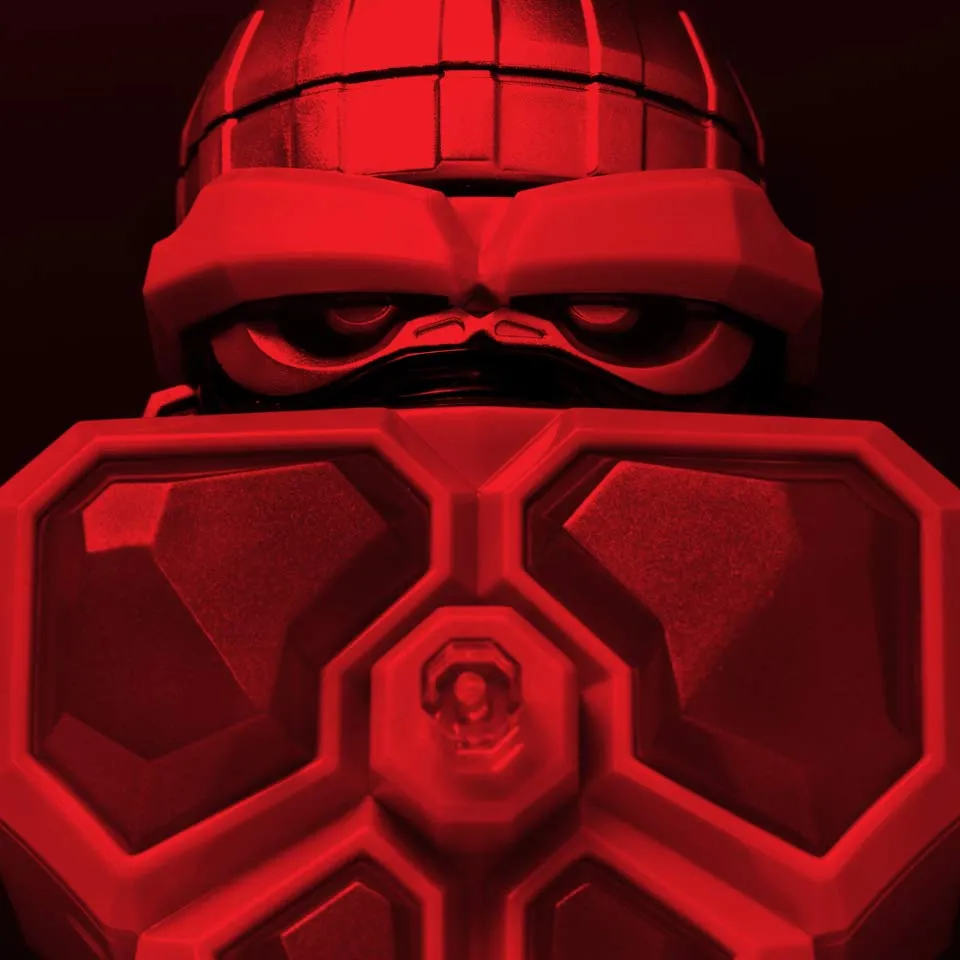Dangerous Symbols
Article in the Exhibition Catalogue GOLEM
Charlotta Kotik
To integrate iconic symbols from diverse civilizations into one’s oeuvre requires a high degree of imagination, astute cultural literacy and immense courage—all of which can be rightfully attributed to American artist Michael David. In the late seventies, he began working with such iconic symbols, and the resulting works often generated great controversy.
Just as the cross adorns countless celebrated works of Western art, so too, the gammadion cross, or swastika, appears as a symbol and decorative motif in works from many civilizations, spanning centuries and continents. Both were selected by the artist as components in his Symbols series. The swastika, which signifies goodness and auspiciousness in Hinduism, Buddhism and Jainism, became forever stigmatized once it was coopted by the National Socialists in Germany. Its original meaning as a symbol of good luck was hijacked by the forces of darkness, which transformed it into a symbol of destruction. Thus, David’s decision to associate the swastika with the legend of Golem in a series of works dating from 1977 to the present could be seen as a glaring offense.
However, should it really be viewed in such a simplified manner? The Golem is said to have been created to help his master bring security to Prague’s well-established Jewish community. Legend has it that at one point an improper command enraged the powerful creature, instigating a spree of destruction that ultimately led to the Golem’s own demise. Similarly, the swastika was created as a sign of fortitude, and seen as such until its original meaning for Western eyes was corrupted by its shocking misuse by the Nazis.
David’s investigation of the symbol’s perverse power and multiple meanings can also be traced to the artist’s intense involvement in New York City’s Punk Rock scene, where the swastika was fetishized; it appeared in promotional graphics and was worn by some of the musicians, even though many of them were Jewish. For David, a Jew taking ownership of the swastika was akin to some African Americans reclaiming the N-word by using it in their music and poetry. Punk as an art form—violent, visceral, self-destructive, and monstrous—mirrored the narrative of the Golem.
David’s paintings in the Symbols series share a pronounced sculptural quality: The surfaces are tactile and dramatic, expressive of the artist’s hand and process. Golem possesses an "objectness" that corresponds with the materiality of the clay fictional being. In the narrative about the golem of Prague, it’s stated the materials used in the process of creation of the golem, were wax, dirt, clay and fire. David’s encaustic painting practice for decades has been defined by the use of wax and fire. The Golem’s ultimate disintegration into a mound of its original matter—"dust to dust, everything is dust"—bespeaks the perils of creativity, and its potential for extremism and self-destruction.
Charlotta Kotik is an art historian born in Prague and moved to the US in 1970. Until 2007 she was chief curator for contemporary art at the Brooklyn Museum in New York. During that time she initiated an extensive exhibition program of artists such as Louise Bourgeois or large group exhibitions such as Open House: Working in Brooklyn . Today, she works as an independent curator based in NYC.
The Golem Michael David (b. 1954), USA, 2007–2013 Mixed media, 205.7 x 205.7 x 10.2 cm Courtesy of the artist, Michael David
Citation recommendation:
Charlotta Kotik (2016), Dangerous Symbols. Article in the Exhibition Catalogue GOLEM.
URL: www.jmberlin.de/en/node/4708

Online Edition of the GOLEM Catalog: Table of Contents
The Golem in Berlin: Introduction by Peter Schäfer
Chapter 1
- The Golem Lives On: Introduction by Martina Lüdicke
- My Light is Your Life: Text by Anna Dorothea Ludewig
- Avatars: Text by Louisa Hall
- The Secret of the Cyborgs: Text by Caspar Battegay
Chapter 2
- Jewish Mysticism: Introduction by Emily D. Bilski
- Golem Magic: Text by Martina Lüdicke
- Golem, Language, Dada: Text by Emily D. Bilski
Chapter 3
- Transformation: Introduction by Emily D. Bilski
- Jana Sterbak’s Golem: Objects as Sensations: Text by Rita Kersting
- Crisálidas (Chrysalises): Text by Jorge Gil
- Rituals: Text by Christopher Lyon
- A Golem that Ended Well: Text by Emily D. Bilski
- On the Golem: Text by David Musgrave
- Louise Fishman’s Paint Golem: Text by Emily D. Bilski
Chapter 4
- Legendary Prague: Introduction by Martina Lüdicke
- Golem Variations: Text by Peter Schäfer
- Rabbi Loew’s Well-Deserved Bath: Text by Harold Gabriel Weisz Carrington
Chapter 5
- Horror and Magic: Introduction by Martina Lüdicke
- Golem and a Little Girl: Text by Helene Wecker
- The Golem with a Group of Children Dancing: Text by Karin Harrasser
- Bringing the Film Set To Life: Text by Anna-Carolin Augustin
- Golem and Mirjam: Text by Cathy S. Gelbin
Chapter 6
- Out of Control: Introduction by Emily D. Bilski
- Golem—Man Awakened with Glowing Hammer: Text by Arno Pařík
- Current page: Dangerous Symbols: Text by Charlotta Kotik
- Be Careful What You Wish For: Text by Marc Estrin
Chapter 7
- Doppelgänger: Introduction by Martina Lüdicke
- From the Golem-Talmud: Text by Joshua Cohen
- Kitaj’s Art Golem: Text by Tracy Bartley
- The Golem as Techno-Imagination?: Text by Cosima Wagner
See also
- GOLEM: 2016, online edition with selected texts of the exhibition catalog
- GOLEM: 2016, complete printed edition of the exhibition catalog, in German
- Golem. From Mysticism to Minecraft: Online Feature, 2016
- GOLEM: Exhibition, 23 Sep 2016 to 29 Jan 2017

